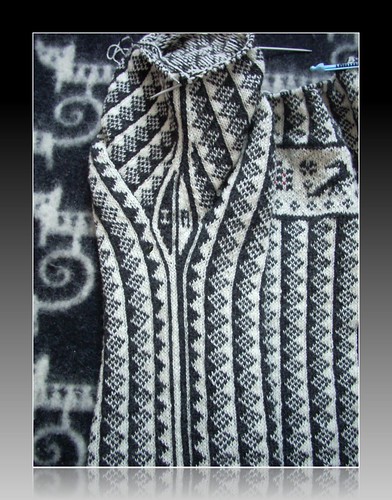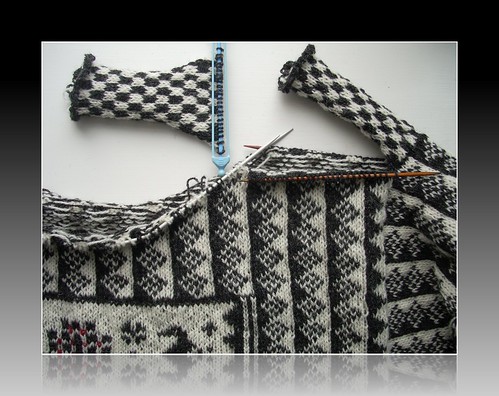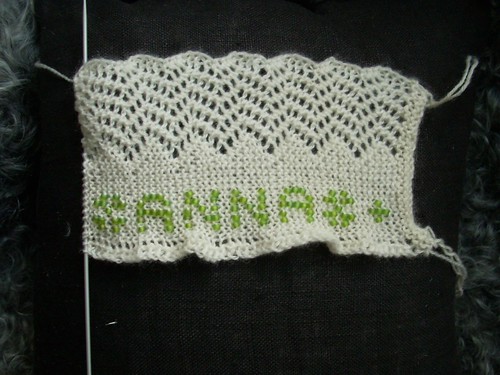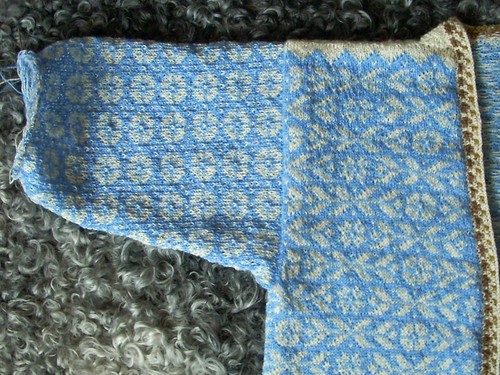Ron asked about checkerboard borders, whether they are typical here. I would say they are not uncommon but not exactly typical. Personally, I like how it looks and enjoy knitting it more than stripes as I see progress more quickly. I was quite intrigued by Carolina's comment about checkerboard traditions in other cultures.
It seems I'm going to keep this sweater for myself - those are my initials if you look at the sleeve gusset! (Of course it could mean simply that I made it, not that I necessarily own it, so we'll see how I will interpret it once the sweater finished - and I have tried it on!)
 |
| sleeve decreases - ärmminskningar |
I'm happy with the sleeve decreases. I usually go for one of two options: hiding the decreases as much as possible or accentuating them to turn necessity into a decorative element, like in this case. I think it has a kind of calming effect in this kind of pattern separating the decreases with a dark grey and a white column, and they go well with the side columns too (which is where I got the idea from).
The cuffs are striped like the bottom border but with the saddle pattern on the inside. I like details that aren't obvious at first sight. The body starts with a red picot edge; the sleeves have a red edge too, but not picots.
I will use a similar pattern for the neckband: stripes, a contrast colour for the edge. Probably not red but perhaps green or blue.
När jag formar ärmar (oftast med minskningar, eftersom jag gillar att plocka upp maskor runt ärmhålet och sticka ärmarna uppifrån) brukar jag försöka att antingen gömma minskningarna så gott det går eller framhäva dem genom att utnyttja dem till ett extra mönster. I det här fallet valde jag det senare med minskingar på var sida om en mörgrå och en vit rand. Jag tycker att det passar ihop med mönstret i sidan på tröjan och så har det liksom en lugnande effekt - det skulle bli rörigt där minskningarna möts.
Under ärmen har jag gjort en kil och på den ena har jag stickat in mina initialer, så det verkar som om jag får behålla den här tröjan - också. Visserligen skulle det kunna innebära att jag helt enkelt har gjort tröjan, inte att jag nödvändigtvis är ägare, men jag lutar ändå åt den första tolkningen. Vi får se när den är färdig och jag har provat den. Kanske ändrar jag mig då!
Muddarna är smalrandiga för att passa ihop med nederkanten på tröjan, men i stället för röda uddkanter har jag nöjt mig med ett rött vikvarv. På insidan har jag samma rutmönster som över axlarna; jag är svag för detaljer som inte syns med en gång. Halskanten kommer också att bli smalrandig, har jag tänkt mig - fast kanske med en annan kontrastfärg. Grönt eller blått ligger bra till.
Tack för alla fina kommentarer!














